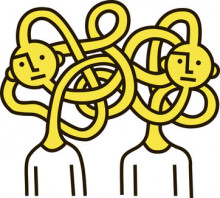What is Your Muse?
Posted in Blog,Writing TipsOctober 1, 2014No comments

Writing isn’t easy. You have to give it your all – but you have to be OK if you fail. In fact, there is a day dedicated to writing failure. July 8 is Fitz-Greene Halleck Day, a chance to remember the most intensely forgotten writer in American history. “No name in the American poetical world is more firmly established than that of Fitz-Greene Halleck,” Edgar Allan Poe wrote in 1843. And yet, despite a Central Park statue that still stands in his honor, Fitz-Greene Halleck may now be the most famous man ever to achieve total obscurity.
Failure is big right now — a subject of commencement speeches and business conferences like FailCon, at which triumphant entrepreneurs detail all their ideas that went bust. But businessmen are only amateurs at failure, just getting used to the notion. Writers are the real professionals.
Three hundred thousand books are published in the United States every year. A few hundred, at most, could be called financial or creative successes. The majority of books by successful writers are failures. The majority of writers are failures. And then there are the would-be writers, those who have failed to be writers in the first place, a category which, if you believe what people tell you at parties, constitutes the bulk of the species.
For every Shakespeare who retired to the country and to permanent fame, there are a thousand who took hard breaks and vanished: George Chapman, the first translator of Homer, begging in the streets because his patrons kept dying on him; Thomas Dekker, whose hair went white in debtors’ prison; and my favorite, the playwright John Webster, whose birth and death dates in the Dictionary of Literary Biography have question marks, symbolic hooks into oblivion.









